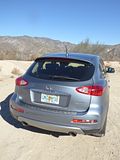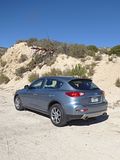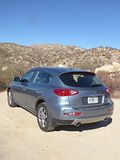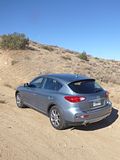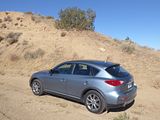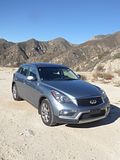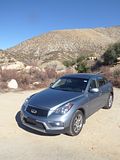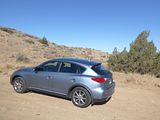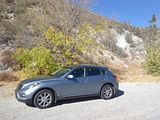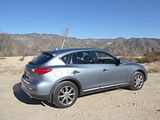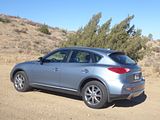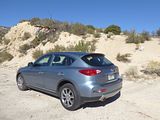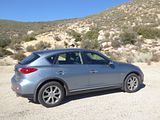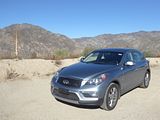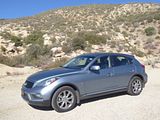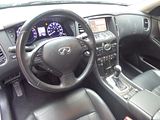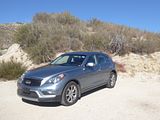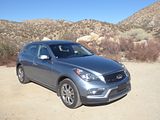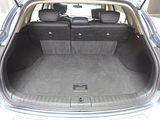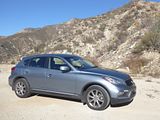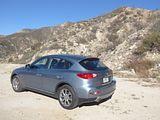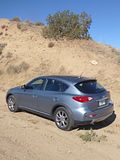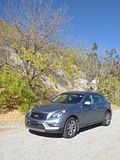Pity the poor rental car companies. Lockdown brought their business almost to a complete stand-still, so they all had to do what they could to offload inventory as fast as possible, knowing that when people were on the move again, they would need at least some of those cars back on fleet and quickly. It was almost too much for rental car giant Hertz, who entered bankruptcy and whose continued existence seemed far from sure for some weeks. During 2021 as the world returned to some semblance of normality, suddenly those small rental fleets looked woefully small, but the problem was that with a global chip shortage making the build and supply of new cars extremely restricted, getting new cars to put on fleet was not the easy task it used to be. There were tales of US car rental companies even buying second-hand cars, just so they had vehicles available to rent. Recent experience in the UK suggested that supply and demand is so finely balanced that you may find that large operations such as Hertz Heathrow simply close off bookings (they did, as I found out, the hard way!) and certainly prices are far higher than they used to be. When planning my late 2021 trip, I found that US car rental prices were also much costlier than I was expecting, which made me just what I was going to find on arrival at Hertz’ LAX facility on a Tuesday morning. not traditionally a particularly good day for car availability. Whilst the massive site was not full, there were plenty of cars parked up ready to go, and an awful lot more waiting to be cleaned. So I had the luxury of choice. I wandered around to see what was new on fleet in the two years since I had last been on American soil, and my eye was attracted not by something new, but by something old. An Infiniti QX50, no less, of the type whose last model year was 2018. Although its larger brother, the QX70 had been popular and quite numerous in the fleet for years, the smaller QX50 had never featured in the locations I had visited, so seeing this was a real surprise. I did wonder if was indeed of those secondhand purchases. It had Florida plates, and quite a lot of what I have sometimes called “rental car unicorns” are plated there, so it may well be that it has in fact been on fleet for some time and now found its way across the country. Delighted to find my friend Annie had survived the Hertz dramas of the last couple of years, I asked her if it could be allocated to me, and she was able to do so. I was expecting a car of this age to have a high mileage, but in fact the odometer was only showing 39,000 miles, which is what a lot of rental cars do in less than 2 years. The paperwork said it was a 2017 car and the build plate confirmed that it had been built in January 2017. Apart from a few light scratches and some light creasing in the leather seats, it was in pretty good condition for this old a rental car, and the paint that Infiniti call Hagane Blue promised well for the photographer, so I was happy to have sourced it for a relatively short day revisiting some of my favourite roads in the Los Angeles area.
The QX50 started out being called the Infiniti EX followed by a number denoting the size of the engine, so the EX35 initially, and later the EX37 or for those markets who wanted thriftier models the EX25 and EX30d. And before the production car, there was a concept, which made its debut at the 2007 New York Auto Show. A barely changed production model was launched later that year, with this mid-sized crossover slotting into Infiniti’s range under the FX35, as it was called at the time. It was based on the G Series family of saloon and coupe models, and shared not just mechanical parts but also trim and other details with them. 2007 is before the whole crossover craze got its full momentum, and Infiniti promoted this vehicle, much like they had done with its larger brother as almost a sports car with a roomy body. And with an engine used in the 350Z sports car, this is not just marketing hyperbole, but largely a well-warranted claim as I found out when I first drove an FX35 back in 2008. The styling was well-judged too, with enough cues to tell you that this was an Infiniti, and the balance between versatility and practicality just right. A larger 3.7 litre replaced the 3.5 litre unit for the 2013 model year. In 2014, when Infiniti came up with a new naming schema in 2013, the EX family became the QX50 and there was a modest styling update as well as new equipment and technology. In essence, though, the QX50 changed little over a ten year production, until it was replaced by a brand new second generation model for the 2019 model year following a premier at the 2017 LA Auto Show.
More recent Infinitis have used smaller capacity turbo engines but this one, complete with 3.7 badges on the front wings, uses the V6 unit of that capacity that has also seen service in the 370Z sports car. Modern turbos are all very well and efficient, but sometimes a normally aspirated old-school engine just seems to be right. And that is the case here. It develops 325 bhp and is coupled to a seven speed automatic gearbox. Fire the engine up using the large button to the right of the wheel and your ears will tell you that this is definitely a V6, albeit quite a muted sounding one. Press on the throttle, though and things come to life. There is a glorious edge to this, just as I remember enjoying in the QX70 and its predecessor FX35 and FX37 versions and indeed the old G37 saloon. The engine sounds great, and it also makes this a genuinely brisk car. There is very rapid acceleration available, with a rorty sound accompanying every further depression of the accelerator pedal. No matter speed I was doing or what gear the car was in, there was plenty of extra oomph available, making this feel more like a truly Sporty SUV than most others of the genre. There is a price tag to this, though. Whilst the fuel needle did not look to have moved that much, when I came to fill it up, it took 6 (US) gallons. I had only drive 168 miles, so that computes to 28 mpg US, or 33.42 mpg Imperial, which whilst not that bad in absolute terms, are on the high side for mid-sized vehicles such as this. And with fuel now at $5.00 a gallon these things may well start to count more. At a freeway speed, the QX50 was quiet, with all sources of noise well suppressed so you could certainly happily do a long journey in this car.
It is not just the engine that makes this a good car to drive, it is the rest of the driving dynamics, too. The steering is well judged, with plenty of feel from the traditional power-assisted mechanical set-up. It weights up a bit as you put on more lock, but this was a fun car to take up on the canyon roads north of LA which is where I spent the day. It handles tidily, with lots of grip, and negligible body roll, so combining this with its modest dimensions, it was a perfect choice for those swooping bends on the Angeles Crest Highway. You don’t even pay a penalty with the ride. The QX50 came on 225/55 R18 wheels, and the suspension set up did its very best at coping with Los Angeles’ often terrible road surfaces. The tyres on the test car appeared to be more or less brand new. I did experience something of a nervous feeling especially on the ridged concrete freeways, but realised that this was always when going downhill and I think was an issue with the brakes, as later in the day, these did seem to be jittery when called up onto slow the car from anything other than modest speeds. I reported this to Hertz on retuning the car, and am sure that this was not endemic to the model as I’ve seen no reports complaining. Even though there was a jittery feel, they seemed to do what was required and stop the car quite readily. There is a foot operated pedal for the parking brake. Visibility proved generally good, even with that small and upward sloping third side window. A rear-view camera helped when manoeuvring and there were rear parking sensors as well to warn of nearing obstacles.
The interior of the QX50 looks just like that all of Infiniti models of a few years ago, with the most obvious features being the recessed integrated infotainment unit with buttons on an almost horizontal plane beneath it and an elliptical clock in the centre of the dash. The test car was very black inside, with the main dash moulding and door casings being of this colour with gloss black inlays and only very sparing use of chrome highlights. The chunky steering wheel is leather wrapped and whilst everything else was plastic, it all felt and looked to be of good quality. There is a single instrument cluster with traditional round analogue dials for speedometer and rev counter and smaller fuel gauge and water temperature set at the outer base of these. The centre of the instrument pack contains warning lights and odometer displays. More detailed trip computer type data is displayed via the infotainment screen. There are two chunky column stalks, similar to those you will have found in other Infiniti and Nissan models of the period, with the lights operating by twisting the end of the indicator stalk. There were auto sensing lights but not wipers. The steering wheel boss has the cruise control buttons to the right and audio repeaters to the left. The infotainment screen might look a bit old school by the standards of 2021, and at 7″ it is smaller than those in more recent cars, but it had crisp graphics and was easy to use. Functions were limited to AM/FM radio, some car settings and trip computer data. Option packages would include XM Satellite radio and navigation but neither of these featured on the test car. There are a very welcome array of buttons and knobs to operate the unit in addition to its touch interface. Another sign of the age of the car is the presence of a CD slot. Beneath this are a bank of buttons for the dual zone automated climate control. Old school to look at, it may be, but it is all refreshingly easy to use.
Seat upholstery is leather, and it was showing a few signs of nearly 5 years use, but otherwise it was pleasant to look at and to sit on. There is full electric adjustment of both front seats with buttons on the sides to alter back/forth, backrest angle and seat height. As ever, I set the seat as low as it would go. Even with the seat high, there is ample headroom thanks to the crossover styling. The steering column adjusts manually, with a telescoping in/out as well as up/down. There are height adjustable seat belts. Seat heaters feature, though given temperatures in the 70s, I clearly had no need for these. I readily found a comfortable driving position, and never really felt that I was in a crossover-type vehicle.
Noting that the QX 50 is smaller than the QX70 which was not that generous in accommodation, I suspected that the rear seats might seem cramped. But actually, they were fine. For sure there is quite a central tunnel and the centre console does extend well back, as it does on many cars, but even with the front seats set well back, there was ample knee and leg room and my head was a couple of inches clear of the roof. I think three burly adults across the seat would be a challenge, but for two, it is fine. It was only when researching the car to be able to write this report that I found out that in 2016 Infiniti actually stretched the wheelbase of the QX50 thereby creating an extra 6 inches of leg room and 3.9 inches of kneeroom that this spaciousness suddenly made more sense. There is a large drop down central armrest, which has a lid covering the cup holders. Surprisingly, there are no pockets on the doors, so the only place for oddments is in the map pockets in the back of the front seats.
The boot is not all that big. The issue is not really that sloping rear roof line so much as the fact that the floor is high, so the load area up to window line is quite shallow. There wasn’t a load cover on the test car, though all the mouldings are there to suggest that these do exist. I did not have luggage anyway, as BA had helpfully left my suitcase in London, so I was travelling particularly light. The tailgate is large and heavy and in a more recent design would probably come with electric assistance but here it relies on you to raise and lower it. There is a space saver under the boot floor and place around its perimeter to tuck a few odds and ends. The rear seat backrests are asymmetrically split and you can either drop them by pulling the catch on the top of the backrest or there is electric assistance with a button by the tailgate. When lowered the backrests form a flat and long load bay. Inside the cabin, there is a decent sized glovebox, and there are pockets on the front doors, as well as a small cubby under the central armrest. Compared to other models, this seems a bit limited, but it would probably suffice for many people.
The 2017 QX50 is only available in one trim level, and all available features are grouped into packages. That 3.7-litre V6 engine and a seven-speed automatic transmission are standard, with either rear-wheel drive or all-wheel drive available. The QX50 comes with a nice array of standard features, like leather and heated front seats, a moonroof, satellite radio, and an infotainment system. You’ll find a Bose sound system in models with the Premium package, while the Premium Plus package includes things like navigation, parking sensors, and a surround-view camera (these models will also come with the contents of the Premium package). At the time, the recommendation was for drivers to seek out a model with the Technology package, which comprises most of the available driver assistance and advanced safety tech. These features are adaptive cruise control, forward collision warning, automatic emergency braking, lane departure warning, lane keep assist, and blind spot monitoring. The test car did not seem to have any of those Option Packages on it.
I rather liked this QX50. The decision to take what was almost certainly the oldest car on the Hertz lot may have seemed a little odd to most people, but I felt vindicated in my choice. Not only did I get to sample a car that had eluded me when it was still on sale as a brand new vehicle, but I got to spend a day in a car which made a nice noise, went well, and which, thanks to the age of the design, was unadorned with the various electronic fripperies that feature on almost all brand new designs. Truth be told, there was nothing serious that I felt was missing, with the possible exception of a navigation system which was available as a cost option, just not specified for this test car. Hertz do have rather more of the current design QX50 on fleet, so it will be interesting to try one and see if it is a genuine improvement or whether like the Q50 that succeeded the much-rated G37, it has missed the mark. For sure with this particular QX50, I think they hit it spot on.

















